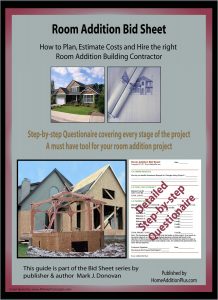Selecting Quality Lumber is Critical for ensuring a Quality Built Home
By Mark J. Donovan
|
|
Wood is the most common building material used in constructing homes. When cut or formed into boards, planks and sheathing it is referred to as lumber. Lumber building material is used for a myriad of home construction applications. It is used in the framing of the home’s skeleton, for wall and roof sheathing, for subfloors and finished floors, for cabinets, and even trim work.
It is important when building a home or home addition that quality lumber is used. For example the use of sub-standard framing lumber, that is either warped or twisted is difficult to work with and results in uneven floors and walls. |
Drywall and paint do not hide wall bulges and finished flooring cannot be installed without first leveling the subfloor. The use of sub-standard lumber building material always cost more, so don’t try to save a few dollars on lower quality lumber.
| Before lumber arrives at your local home improvement store, it is cut, stacked and kiln dried. These steps are necessary as green, or unseasoned wood has high moisture content and will twist, warp, split and cup as it slowly dries out. Freshly cut wood can frequently have a moisture content greater that 20%. By properly stacking and drying the cut wood a stable lumber building material is produced.
When selecting framing lumber material you will notice that each piece is stamped with a moisture rating level. You may notice stamps markings of S-Grn, Grn, S-Dry or KD 19. |
 |
S-Grn and Grn signify that the moisture content of the particular piece of building lumber has a moisture content above 19%. S-Dry or KD 19 indicates that the particular piece of building material has a moisture content of 19% or less. Most soft framing lumber that is used in the United States for home construction, such as pine 2x4s, is rated for KD 19.
C Select and D Select are higher quality building lumber and are ideal for finish carpentry applications, including cabinet work, whereas Common ratings may be used for paneling and fencing applications.
| So when selecting lumber building material make sure you’re buying the appropriate material for your project. If you want a quality home, select kiln dried lumber material. And when picking framing lumber out of the bin or rack inspect it carefully. For example, when buying 2x4s I always look down the length of it, rotate it once or twice and inspect for twists and knot density. By taking a little extra care when selecting your lumber material you will ensure a quality home or home addition. |
|
For more help on building a home addition, see HomeAdditionPlus.com’s Home Addition Bid Sheets. Our Home Addition Bid Sheets provide you with the knowledge and information on how to plan a home building project, and what to look for when hiring contractors. They also include detailed cost breakdown tables and spreadsheets for estimating your own new home construction building costs.
Related Information
- How to Select Quality 2×4 Lumber
- Which is Best – Roof Trusses or Roof Rafters
- How to Frame a Home Addition or New House
Additional Framing Resources from Amazon.com
 |
 |
Free Home Addition Price Quotes with No Obligation!
Fill out our 3-5 minute quick and easy form, and receive a free price quote on a house addition from one of our prescreened and licensed home addition contractors. This process is free and there is no obligation to continue once you receive your home addition price estimate.

